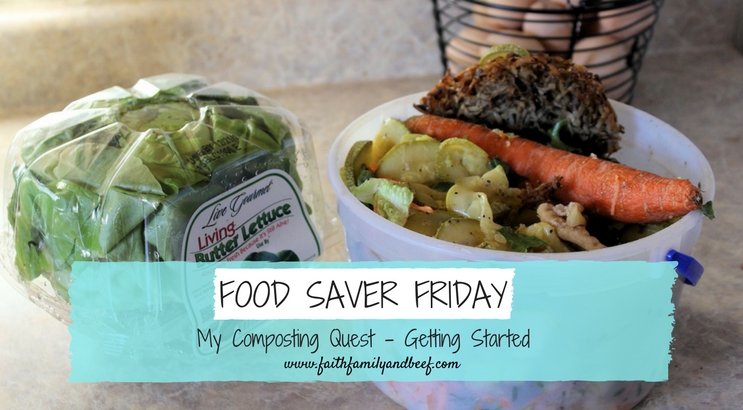It is really sandy here. I know, I know – we live in the Sandhills. But, we have seriously got a supersized sandbox situation sitting directly where my garden is slated to go next spring. Long story short, our sandbox garden needs some organic matter to help my veggies thrive come springtime. Enter my composting quest.
My Composting Quest – Getting Started
As I’ve said before, composting is something that has always intrigued me, as well as something I have never done. That is until now. I read up on getting started, sought advice from my old college roommate who just so happened to major in horticulture, and took off my composting quest.
No Bin, No Problem
When I suggested composting to cure our sandy sandbox situation, my husband suggested building compost bins out of old pallets. And I thought, recycling old pallets and repurposing food scraps – what a great idea! Fast forward two months – it is almost wintertime, my chicken house needed cleaning, and I still don’t have bins.
It has been crazy busy around here and I don’t necessarily need fancy schmancy bins to compost. They were more of a want than an actual need, really. Piles on the ground are just as successful at turning our carbon rich compost as bins. And besides, composting in piles leaves me the opportunity to positively impact the soil in more areas than just my sandbox – I mean, garden.
Location, Location, Location
Free from the confines of a compost bin, I looked around for the best place to place my compost pile. And not to toot my own horn, but I did pick pretty much the perfect spot for composting. The locale of my pile is just to the west of my chicken house, facing the south on an erosion prone hill.
The close proximity to the chicken house means I don’t have to haul the bedding (the base of my compost pile) very far. I have easy access to water with which to keep my compost moist. There is plenty of sunshine to help heat the pile. And, the pile will help keep the sand in place and improve soil health on said erosion prone hill. It is win-win-win-win.
Composting Components
There are four main components of composting…
- Carbon rich material – leaves, wood, wood chips, hay, straw, and pretty much anything else that is plant based and brown.
- Nitrogen rich material – fruit and veggie scraps, eggshells, green lawn clippings, manure, etc. Or in my case, chicken poo, egg shells, and pumpkin scraps, including two scrunchy faced jack o’lanterns.
- Air – The bugs and microbes that breakdown the organic matter, forming the nutrient rich compost – they need to breathe.
- Water – Just as they need air to breathe, the bugs also need water to thrive.
I use hay in my chicken house to keep my hens comfy and because they aren’t exactly housebroken, they poop on it. A fair amount of carbon rich material literally sprinkled with nitrogen rich material – this poo’ed on hay is perfect for composting. So I am taking full advantage, layering the chicken poo sprinkled hay, followed by a layer of eggshells, watermelon rind, pumpkin scraps and two scrunchy faced jack o’lanterns, and topped with another layer of chicken poo sprinkled hay.

This here is the eggshell, watermelon rind, pumpkin scrap, scrunchy faced jack o’lantern topped chicken bedding just before I added the final layer of chicken poo sprinkled hay.
Once I had my layers in place, I gave showered the pile with a bit of water to make sure it was good and moist, but not sopping wet. In addition, my binless approach to composting will ensure that those little bugs have room to breathe. That and, I plan to turn the pile once a week for maximum aeration.
I am beyond excited to finally have my composting quest underway. Check back regularly for updates on my composting quest and journey to save my sandy sand box situation.
Next Time on Food Saver Friday
Next time, we are going to talk turkey. Thanksgiving is coming and the leftovers will abound, of that I am sure. And, there are only so many times one can eat plain old turkey and the fixings. So, next time I will be going over a few Thanksgiving leftover makeovers.
In the meantime if you have questions or ideas for future Food Saver Friday topics, feel free to leave them here in the comments, or shoot me an email using the Contact Me page. And if you’ve missed any of the food saving goodness, click here to catch up.

 Hello! I’m Terryn – the wife, mother, food safety enthusiast, Stormy Kromer fanatic who has slightly (okay, a lot) random tendencies, dabbles in photography, and shares (maybe a little too much) here at FFB.
Hello! I’m Terryn – the wife, mother, food safety enthusiast, Stormy Kromer fanatic who has slightly (okay, a lot) random tendencies, dabbles in photography, and shares (maybe a little too much) here at FFB.